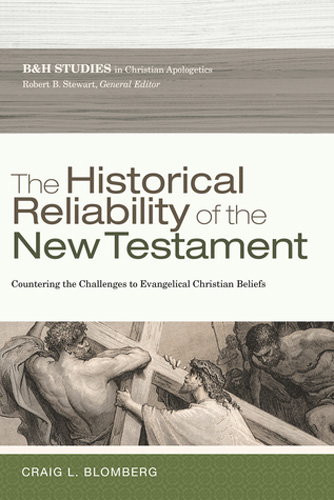Historical Reliability of the New Testament Documents
About This Class
This course covers the accuracy of Biblical texts, the impact of popular media on interpretations, and the importance of critical thinking. You'll explore Dan Brown's "The Da Vinci Code" and its effect on religious history perception. Controversial findings like the gospel of Judas and Jesus' family tomb are discussed. The lesson focuses on textual criticism, the motivations of Gospel writers, oral traditions, and the nuances of biblical translations. It examines the compilation of the Gospels, difficult sayings of Jesus, and what is missing from the texts. The lesson highlights archaeology, early Christian writings, and their role in verifying biblical narratives. It explores genealogies, martyrdom of apostles, sequencing of the Gospels, and digital preservation of ancient...
Craig Blomberg

Lessons
- Learn about the impact of fiction on historical perceptions, the authentication of ancient texts, and the reliability of the Gospels through scholarly textual criticism and historical context.0% Complete
- 0% CompleteExplore the motivations and principles that drove the Gospel writers to preserve Jesus's teachings, how Jewish tradition and the art of memorization influenced the Gospels, and how social memory shaped the oral storytelling techniques they used.0% Complete
- 0% CompleteUnderstand the profound impact of translation types, especially paraphrase Bibles, on interpreting and understanding Scripture, while acknowledging the importance of context, curiosity, and knowledge in navigating biblical complexities.0% Complete
- 0% CompleteYou learn about the Gospel writers' methods, focusing on Luke's detailed compilation process, the historical reliability of the texts, the complexities of Jesus' sayings, and the corroborative testimony from non-Christian sources about Jesus' existence and key aspects of his life.0% Complete
- Discover the Bible's credibility through archaeological evidence and early Christian writings, highlighting tangible evidence and oral traditions that support biblical narratives, culminating in reflections on the rationality of faith based on historical evidence.0% Complete
- 0% CompleteUnderstand the significance of genealogies in the New Testament, the martyrdom of apostles, the order of the Gospels, the credibility of ancient documents, the meticulous copying of manuscripts, the complexity of the canonization process, and the availability of original manuscript facsimiles.0% Complete
Class Resources
Recommended Books
The Historical Reliability of the New Testament: Countering the Challenges to Evangelical Christian Beliefs (B&h Studies in Christian Apologetics)
Questions about the reliability of the New Testament are commonly raised today both by biblical scholars and popular media. Drawing on decades of research, Craig Blomberg...
